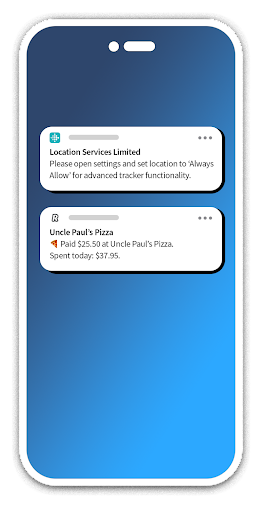Think about the last time you misplaced your phone, or accidentally left it behind when you left the house. Did it feel like you were missing your closest friend, most devoted helper, smartest researcher and most reliable map?
Mobile devices have become integral to our lives in today’s digital age. Mobile shopping makes buying online easy and convenient and consumers are increasingly turning to their smartphones to make purchases.
Here at MessageGears our recent Consumer Engagement Report showed that for 55% of consumers surveyed, mobile was the channel used most often to make online purchases.
Still many marketers are hesitant to dive into a marketing strategy that meets consumers on the device they take everywhere: their phone. You may have heard myths about the channel and aren’t sure it will work for your brand.
Read on as we break down some of the most common myths and share strategies to help you do mobile marketing right!
Myth #1: A low open rate = low engagement
There is an understandable belief that mobile marketers should always aim to maximize open rates. While this might be true for email, push can be slightly more ambiguous, where open rates are not always the best metric for measuring success.
Is a campaign with an open rate of 30% performing better than an open rate of 5%? Your initial response would probably be a resounding yes. But can you know for sure from just this one piece of data?
Take the following notifications from Fitbit and Revolut.

In the first notification, Fitbit prompts the user to take action so they can benefit from the app’s advanced tracker functionality. The incentive to tap is high as it helps users better track their health and fitness. In this case, Fitbit would likely use the open rate to measure campaign engagement.
In the second example, Revolut provides valuable, relevant data to their users by notifying them about their daily spending, helping them keep track of their expenditure and remain within budget. The key difference here is users don’t need to open, click, or engage with the push to experience real value from the app. For this type of push, it wouldn’t make sense for Revolut to use the open rate to gauge user engagement.
What is the objective of your push campaign? Understanding how you want your users to react to your messaging will help guide you to the right metrics for measuring success.
Myth #2: Push notifications annoy users
While it’s true that some push notifications can be annoying, it’s not the notifications themselves that are the problem, but rather how they are used. Excessive, irrelevant, or poorly timed push notifications can irritate users to the point they disable notifications entirely or, worse, uninstall the app.
The key to a successful push strategy is to focus on providing value to every user by delivering thoughtful and personalized content when they will deem it most relevant. Users who receive notifications tailored to their behavior and preferences are more likely to take action (if that is the goal) and engage with your brand.
A push strategy that leverages behavioral data and puts the user at the center of campaigns will see higher app engagement and retention rates.
Myth #3: High downloads guarantees success
The only way to grow is to acquire more users, right? Wrong. While new users is an important metric to track, it doesn’t always translate into long-term success. An app could have a high number of downloads, but a low retention rate, meaning users are initially interested but are not sticking around.
That’s why analyzing user engagement, retention rates, and revenue will help you understand how users interact with the app after the install. Only then will you know if and where they are finding value. If your users churn before completing the onboarding process, for example, analyze your first-time user experience for ways to improve the paths to activation.
Take a look at popular banking apps—it is 2-5 times faster to open an account with Revolut than most other financial institutions.

The digital bank minimizes the number of steps a user needs to take, offers instant verification, and deprioritizes permission prompts. By making the onboarding process as seamless as possible, Revolut attracts and retains a large user base, which contributes to the brand’s global success. When you remove friction from your onboarding, your chances of conversion and retention significantly improve.
Myth #4: Push notifications are the key to engaging users
While push notifications are a necessary engagement tool, they are not the only way to keep users invested in your app.
Triggering messages when users are active in your app can instantly deliver a better mobile experience and build stronger connections. Even generic in-app messages reach 20% engagement rates. Adding personalization based on real-time behavior can see engagement soar to 74%.
Brands use in-app messaging to provide value to users, such as offering tips or recommendations, reminding them of incomplete tasks, or guiding them through a new feature. By combining push notifications with in-app messaging, you can create a comprehensive messaging strategy that keeps users engaged and returning to your app.
Myth #5: Mobile is just another channel
When digital was first born, there were four main channels to reach customers: voice, website, email, and SMS. With the introduction of mobile, new channels emerged in push notifications, in-app messaging, social messaging, and smart devices. Mobile has evolved into a distinct platform that offers brands unique opportunities for more targeted and personalized marketing, making it more than just another marketing channel.
Mobile is the primary source of first-party data, giving brands a continuous stream of behavioral data and a direct path to communicating with customers. By simply installing an SDK, you can track all the key events a user takes on mobile, web, and TV apps. Combine this with the data we already know about the user (their name, preferences, and segments) to gain a solid understanding of your audience and make real-time decisions.
Remember, you need to be where your customers spend their time. And in eight out of every ten digital minutes, that’s on mobile.
Meeting Customers Right Where they Are
Great customer experiences are essential for today’s B2C brands. These days, there’s no denying that the majority of that experience takes place on mobile channels.
Whether you’ve been leveraging this key channel for years or are just beginning, mobile marketing can be a powerful tool for building customer relationships.
The right mobile strategy can help your brand create loyal customers and engage in ways that connect in real-time.
Research shows that consumers check their phones an average of 52-80 times a day. Don’t miss the opportunity to connect with them on mobile.
Movable Ink and MessageGears can help you create personalized messages across both mobile and email by leveraging the internal data you already have. Using the tools together, makes data more readily available and creates new opportunities for tailored content.
Want to learn more about using personalized content to engage your audience? Movable Ink’s Think Summit is coming up June 14-15, 2023 and MessageGears is proud to be a sponsor. Sign up now and we’ll see you there!





